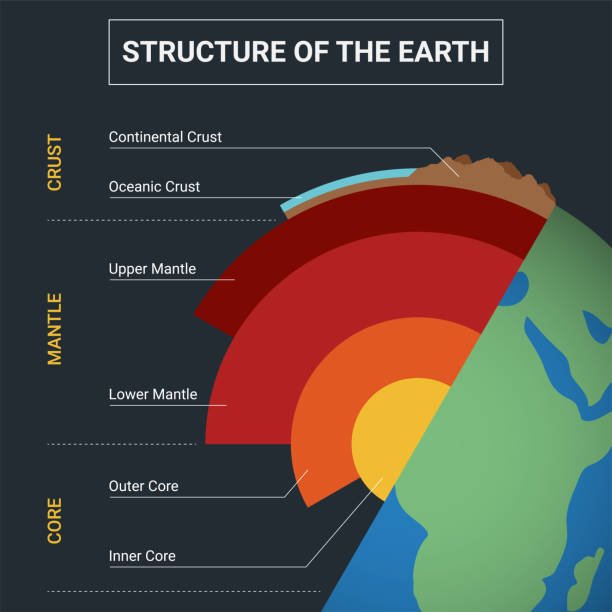Asthenosphere – the layer of the earth that is in a semi-molten state The asthenosphere is a region in the upper part of the Earth’s mantle, situated below the lithosphere. It is characterized by its semi-molten or partially molten state, which allows it to deform and flow over geological timescales. This layer is composed of solid rock that can flow slowly over time due to the high temperature and pressure conditions. The asthenosphere plays a crucial role in the movement of tectonic plates.
The lithosphere, which includes the Earth’s crust and the rigid upper part of the mantle, is broken into tectonic plates. These plates “float” on the semi-fluid asthenosphere. The movement of these plates, driven by processes like mantle convection, results in various geological phenomena such as earthquakes, volcanic activity, and the creation of mountain ranges.
A question may come in your Geography exam asking you to identify the layer of the earth that is in a semi-molten state.
First of all, it is important to understand the structure of the earth. The earth’s structure consists of the following layers:
- Crust: Continental Crust, Oceanic Crust
- Mantle: Upper Mantle, Lower Mantle
- Core: Outer Core, Inner Core

The layer of the earth that is in a semi-molten state is called asthenosphere found in the upper mantle. The upper mantle extends from the crust to a depth of about 410 kilometers. The asthenosphere is the denser, weaker layer beneath the lithospheric mantle. It lies between about 100 kilometers (62 miles) and 410 kilometers (255 miles) beneath Earth’s surface. The temperature and pressure of the asthenosphere are so high that rocks soften and partly melt, becoming semi-molten.